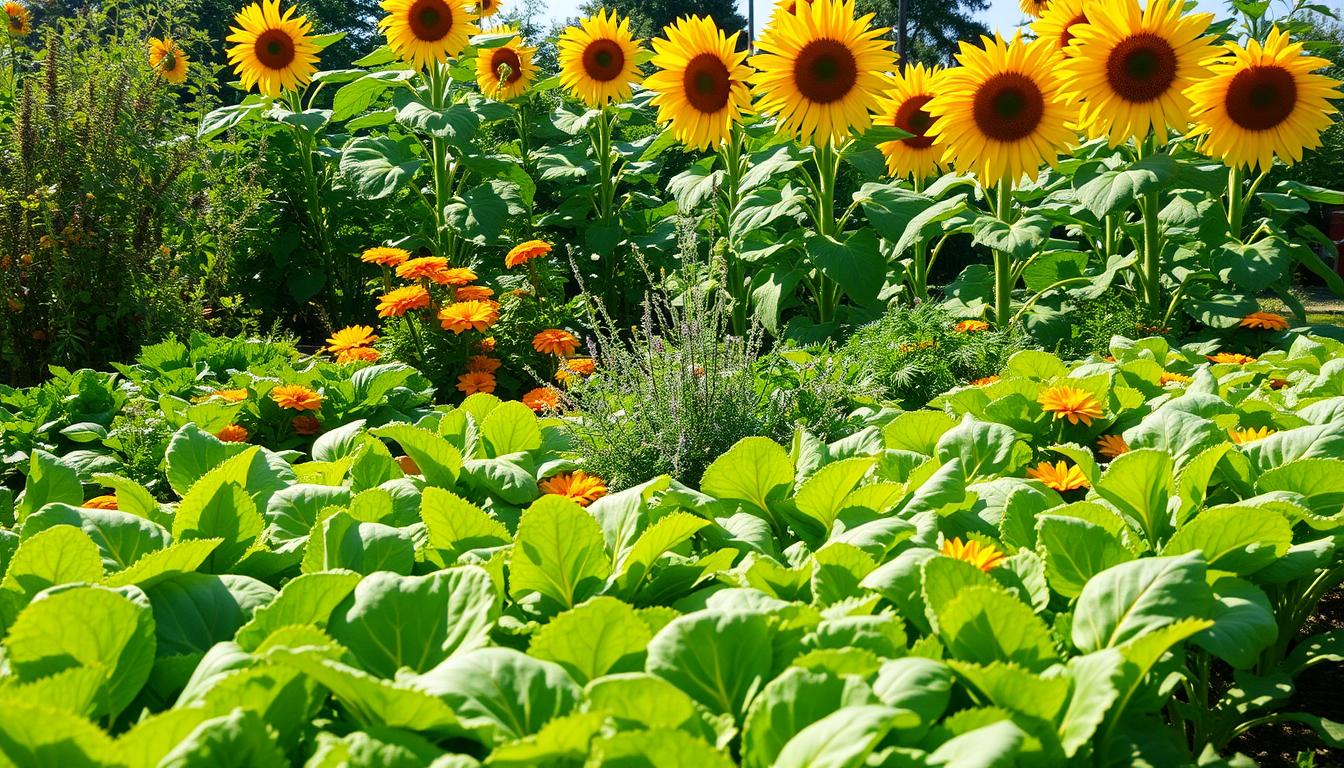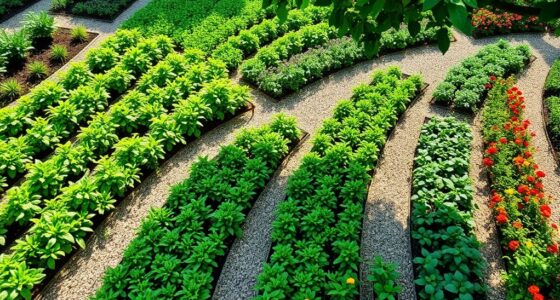Imagine stepping into your garden, surrounded by vibrant greens and the rich scent of earth. As you reach out to touch the tender leaves of your bok choy, you reminisce about the joy of nurturing life from seed to harvest. This journey is not just about growing food; it’s about cultivating harmony within nature. By embracing companion plants for bok choy, you can enhance not only the flavor of your crops but also the health of your garden. Discover the remarkable benefits of bok choy companion planting, an organic gardening approach that fosters sustainable growth and reduces reliance on chemicals.
Key Takeaways
- Companion plants can significantly enhance the growth of your bok choy.
- Using the right plant combinations can improve flavor and yield.
- Organic gardening with bok choy promotes sustainability and health.
- Companion planting reduces the need for chemical pest control.
- Understanding the relationships between plants is key to a thriving garden.
What are Companion Plants?
As you venture into the world of gardening, understanding the concept of companion plants can significantly enhance your gardening experience. Companion planting involves growing different plant varieties together for their mutual advantages. This practice stems from the notion that certain plants can positively affect each other’s growth and health. By familiarizing yourself with the definition of companion planting, you can harness the potential benefits it brings to your garden.
Definition of Companion Planting
The definition of companion planting refers to the strategic arrangement of plants that serve to assist one another. For example, some plants may deter pests, while others improve soil nutrients or provide shade. Understanding these relationships can help you create a thriving ecosystem in your garden.
Benefits of Companion Planting
The benefits of companion planting extend far beyond simply maximizing space. This gardening technique can lead to numerous advantages, including:
- Increased crop yields, as certain combinations enhance growth.
- Improved flavor, particularly in vegetables such as bok choy.
- Enhanced biodiversity, which cultivates a healthier garden environment.
By embracing the definition of companion planting and its myriad benefits, you empower yourself to create a flourishing garden that thrives on natural cooperation.

Why Choose Bok Choy?
Bok choy, or Chinese cabbage, offers remarkable qualities that appeal to both health-conscious eaters and culinary enthusiasts. Its distinctive taste and texture make it a favored ingredient in various dishes. Considering the nutritional benefits of bok choy, culinary uses of bok choy, and growth characteristics of bok choy can help you appreciate this versatile vegetable even more.
Nutritional Benefits
The nutritional benefits of bok choy make it a powerhouse in your diet. Packed with vitamins A, C, and E, it supports immune function and promotes healthy skin. Folate plays a crucial role in cell division and DNA synthesis, while minerals like calcium and potassium contribute to bone health and muscle function. Adding bok choy to your meals ensures you are boosting your nutrient intake in a delicious way.
Culinary Uses
The culinary uses of bok choy are extensive, allowing you to get creative in the kitchen. Its crisp leaves and mild flavor make it perfect for stir-fries, steamed dishes, and soups. You can even enjoy it raw in salads, where its crunchy texture adds a refreshing element. This versatility means that bok choy can easily fit into various cuisines, particularly Asian dishes where it shines as a staple ingredient.
Growth Characteristics
Understanding the growth characteristics of bok choy can enhance your gardening experience. This cool-weather crop thrives in early spring or late summer, preferring well-drained soil and consistent moisture. Partial shade during warmer months helps prevent bolting, ensuring your plants remain healthy and productive. Knowing these growth traits will aid in successful cultivation, allowing you to enjoy a bountiful harvest.
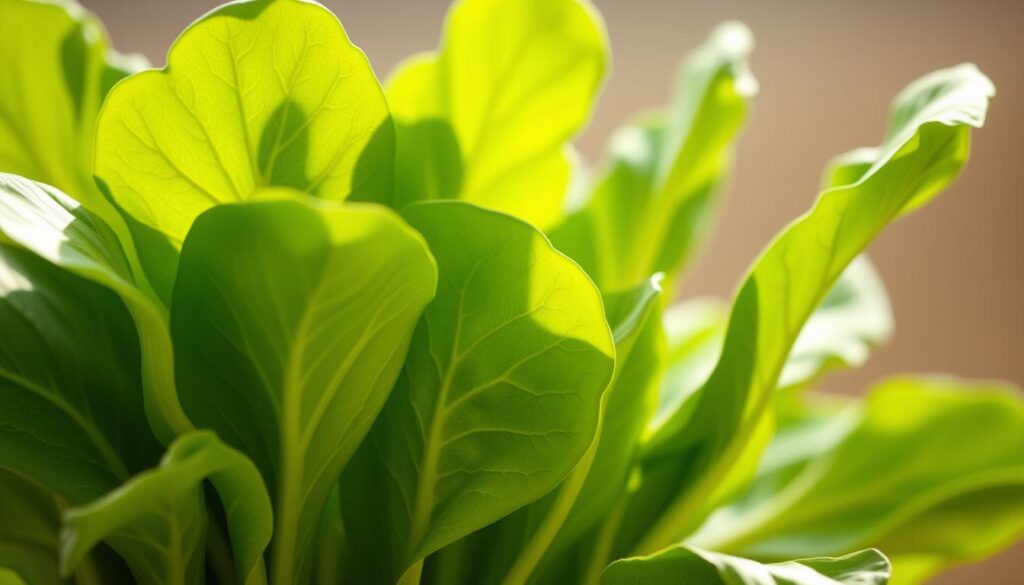
Ideal Planting Conditions for Bok Choy
Creating the perfect environment for bok choy can significantly enhance its growth and health. Focus on specific soil, sunlight, and watering requirements to achieve optimal results.
Soil Requirements
Bok choy flourishes in fertile, well-draining soil rich in organic matter. A neutral to slightly acidic pH level between 6.0 and 7.0 is ideal for robust growth. Incorporating compost can improve soil fertility and structure, allowing roots to thrive.
Sunlight Needs
Understanding bok choy sunlight needs is essential for healthy development. This crop requires at least 6 hours of direct sunlight each day. Position your plants in a location that receives ample light, ensuring they develop strong and vibrant leaves.
Watering Tips
Effective bok choy watering tips center around maintaining a consistently moist environment. Water the plants thoroughly, allowing moisture to reach the roots. Employing mulch can help retain soil moisture while minimizing weed competition, creating a favorable growing environment.
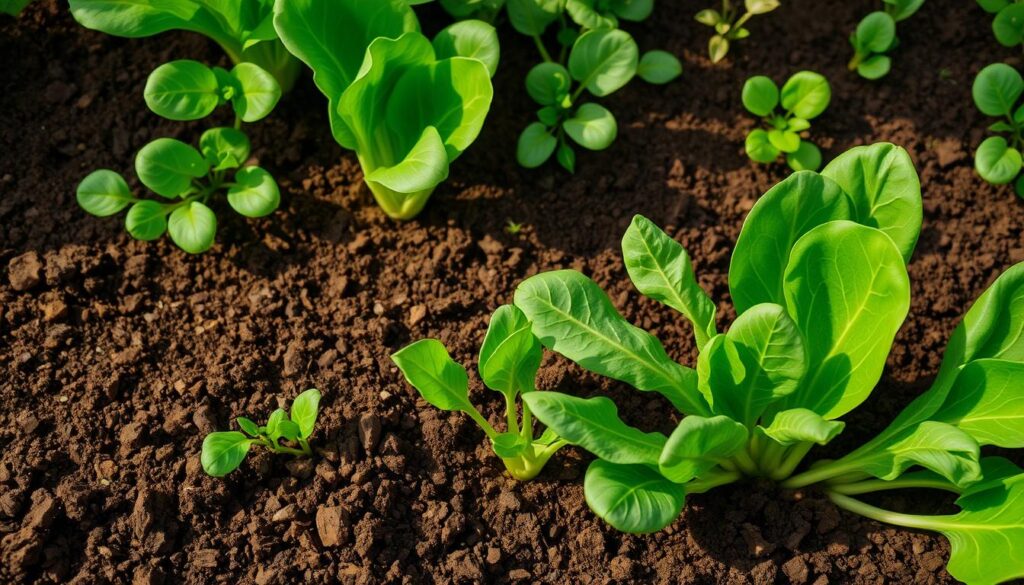
| Condition | Ideal Value |
|---|---|
| Soil pH | 6.0 – 7.0 |
| Sunlight | 6+ hours/day |
| Watering Frequency | Consistently moist |
Best Companion Plants for Bok Choy
When growing bok choy, selecting the best companion plants can significantly enhance your gardening experience. Choosing the right companions can lead to increased growth, pest control, and healthier crops. The following sections explore herbs to grow with bok choy, vegetables to pair with bok choy, and flowers supporting bok choy’s growth.
Herbs That Thrive with Bok Choy
Many herbs work wonderfully alongside bok choy, attracting beneficial insects while maximizing growth. Notable options include:
- Basil: Enhances flavor and growth, deterring pests.
- Cilantro: Attracts pollinators and beneficial insects.
- Dill: Complements the flavor of bok choy while attracting beneficial insects.
Vegetables to Pair with Bok Choy
When considering vegetables to pair with bok choy, focus on those that boost soil health and support bok choy’s growth. Excellent counterparts include:
- Carrots: These root vegetables improve soil aeration and nutrient availability.
- Beans: Leguminous plants enrich soil nitrogen, which benefits bok choy.
- Radishes: Their quick growth helps control weeds while creating space for bok choy’s growth.
Flowers that Support Bok Choy Growth
Certain flowers serve as excellent companions for bok choy, drawing pollinators and deterring unwanted pests. Consider planting:
- Marigolds: These flowers provide strong pest control and attract helpful insects.
- Nasturtiums: They attract pollinators and offer natural pest deterrence.
- Sunflowers: These towering beauties provide shade and attract beneficial insects.
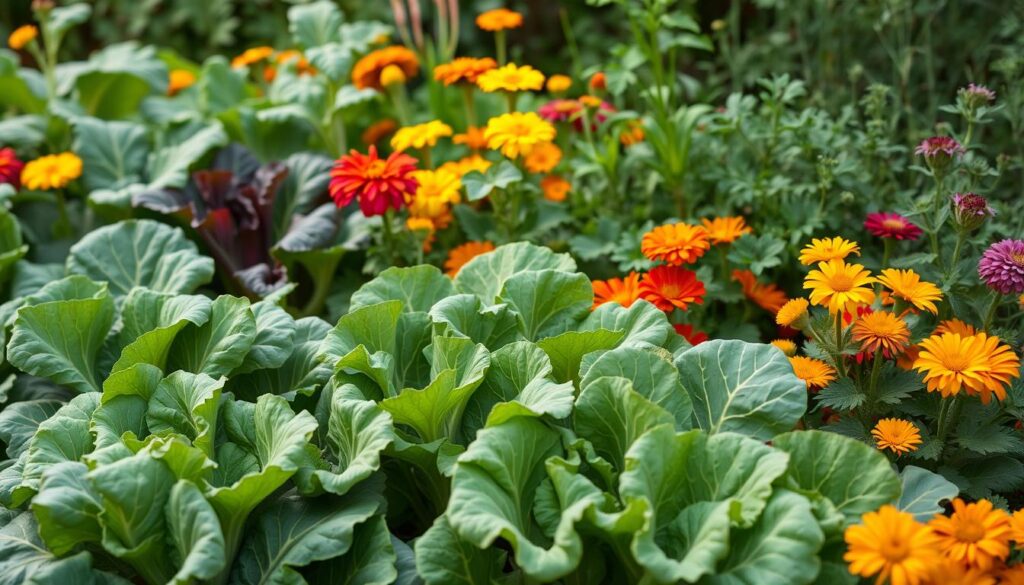
Herbs That Pair Well with Bok Choy
Incorporating the right herbs into your garden can significantly enhance the growth and flavor of your bok choy. Certain herbs not only complement the taste of bok choy but also provide additional benefits for your gardening efforts. Here’s a closer look at the herbs that pair with bok choy.
Basil: Boosting Flavor and Growth
Basil growing benefits include its ability to enhance the flavor of bok choy when both are planted together. The aromatic properties of basil can help to deter pests that might otherwise threaten your crop. Moreover, this herb encourages robust growth in bok choy, making it a perfect companion for a thriving garden.
Cilantro: Attracting Beneficial Insects
Cilantro benefits for gardening extend beyond just adding flavor to your dishes. This herb attracts beneficial insects such as ladybugs, which prey on aphids that can harm your bok choy. By planting cilantro nearby, you create a sanctuary for helpful creatures while ensuring the health of your garden.
Dill: Enhancing Bok Choy’s Flavor
Dill flavor enhancement makes it an excellent companion for bok choy as well. Not only does dill improve the taste of your bok choy, but it also attracts pollinators, which can support the overall garden ecosystem. Including dill in your planting scheme contributes to diverse and flavorful crops.
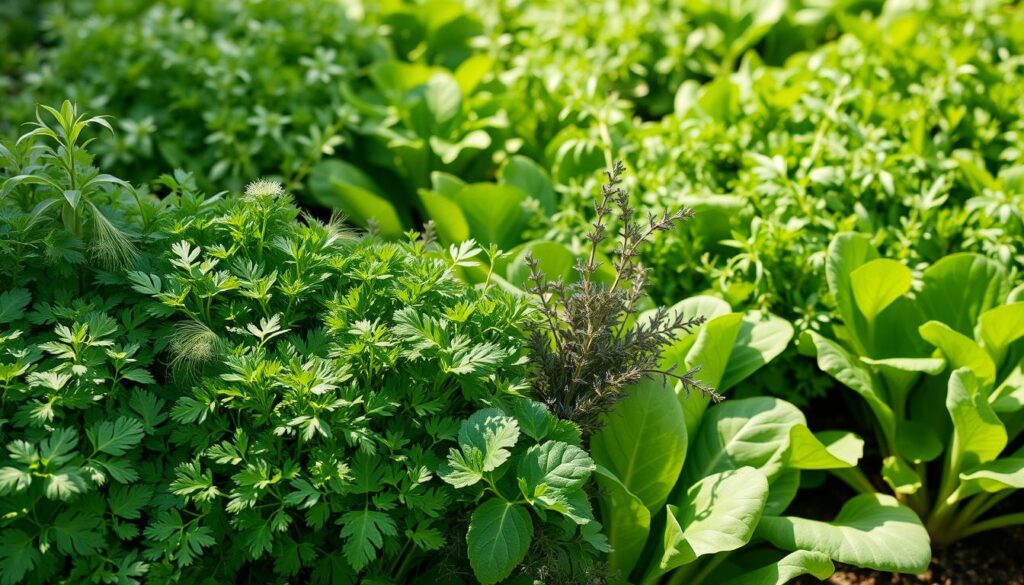
| Herb | Benefits | Companion Effects |
|---|---|---|
| Basil | Enhances flavor | Repels pests, promotes growth |
| Cilantro | Attracts beneficial insects | Controls aphid populations |
| Dill | Improves flavor | Attracts pollinators, boosts ecosystem |
Vegetables That Complement Bok Choy
Growing vegetables that complement bok choy can enhance both its health and flavor. By strategically choosing partners in your garden, you can create a thriving ecosystem that promotes growth and minimizes pests. Here are some excellent choices to consider.
Carrots: Space-efficient Partners
Carrots growing with bok choy provide several advantages. Their deep root system not only aerates the soil but also helps with drainage, which is crucial for bok choy’s roots. This symbiotic relationship allows each plant to flourish while maximizing your garden space.
Radishes: Natural Pest Deterrents
Radishes act effectively as pest deterrents. When planted near bok choy, radishes can protect your crop from common pests, while their rapid growth offers shade to the more sensitive bok choy. This dynamic duo creates a beneficial balance within your vegetable garden.
Peas: Nitrogen Fixers
Peas for nitrogen fixing are another smart addition. These legumes enrich the soil naturally, providing essential nutrients that bok choy requires throughout its growth cycle. By incorporating peas, you will not only support bok choy’s health but also improve soil fertility for future crops.

| Vegetable | Benefits |
|---|---|
| Carrots | Deep roots improve soil aeration and drainage |
| Radishes | Fast growth deters pests and provides shade |
| Peas | Enhance soil nitrogen levels for optimal growth |
Flowers Beneficial for Bok Choy
Integrating flowers into your bok choy garden not only enhances its aesthetic appeal but also contributes significantly to plant health. Certain flowers can provide pest control, attract beneficial pollinators, and offer shade and support, making them invaluable companions for your bok choy.
Marigolds: Pest Control Powerhouses
When you think about flowers beneficial for bok choy, marigolds immediately come to mind. These vibrant flowers act as natural pest control measures, effectively warding off harmful insects such as nematodes and aphids. By incorporating marigolds, you create a less hospitable environment for pests, allowing your bok choy to thrive.
Nasturtiums: Attracting Pollinators
Next on your list could be nasturtiums, renowned for attracting pollinators. Their bright flowers not only add a splash of color but also entice bees and butterflies, which are essential for pollination. This interaction boosts not just the health of your bok choy but also the entire garden ecosystem.
Sunflowers: Shade and Support
Finally, consider sunflowers for their dual functionality. As they grow tall, they provide sunflowers and shade support for your bok choy during the hot summer months, protecting it from sun scorch. This shade can help maintain optimal growing conditions for bok choy while the vertical height of sunflowers adds diversity to your garden layout.
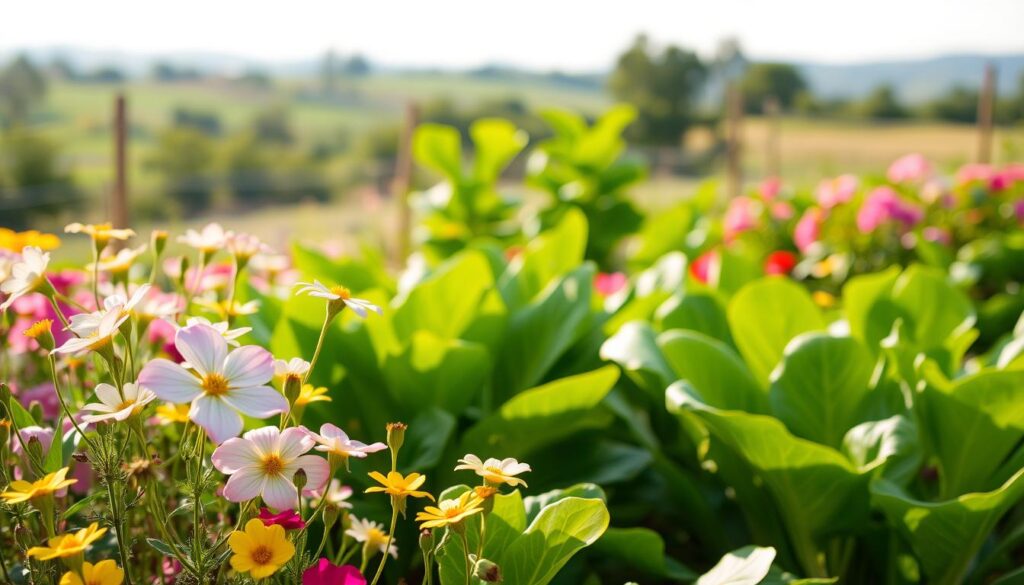
Plants to Avoid with Bok Choy
When planting bok choy, it’s essential to be mindful of certain plants that can hinder its growth. Understanding the plants to avoid with bok choy can contribute to a healthier and more productive garden.
Nightshade Family Dangers
Members of the nightshade family, including tomatoes, peppers, and eggplants, pose significant risks for bok choy. These plants can attract pest complexes that may lead to infestations detrimental to your bok choy. Keeping your bok choy away from these troublesome neighbors can help maintain its health and yield.
Strongly Flavored Herbs
Strongly flavored herbs such as mint and sage should also be avoided when planting bok choy. These herbs can compete for nutrients in the soil, potentially affecting the flavor and quality of your bok choy. Selecting milder herbs can provide a better balance in your garden.
Competitive Plants
Additionally, you should steer clear of competitive plants to bok choy that are invasive or have a sprawling growth habit. Plants like zucchini or large squash varieties can overshadow bok choy, leading to overcrowding and stunted growth. Strategically arranging your garden layout can ensure that each plant flourishes.
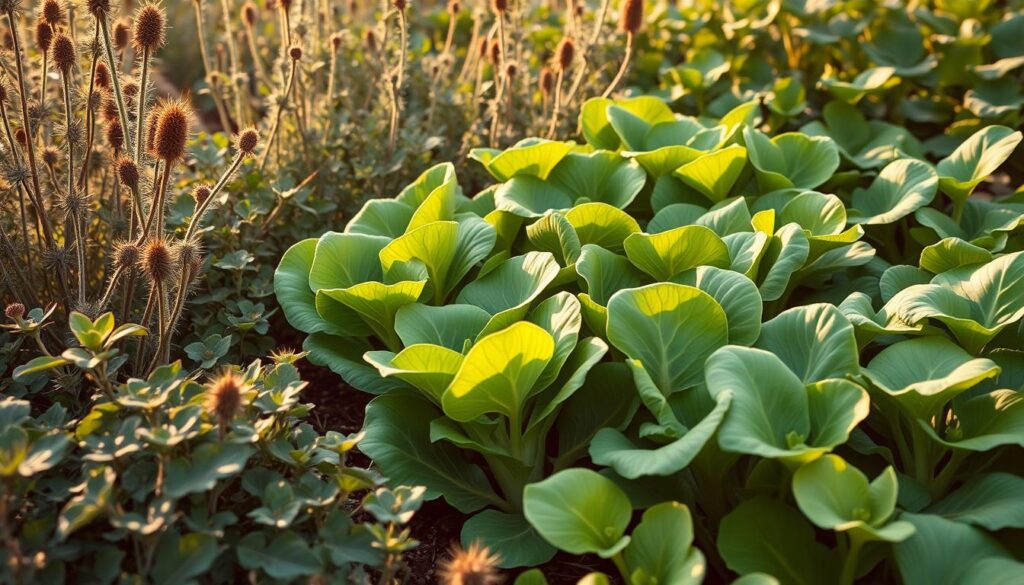
Seasonal Companion Planting Tips
Understanding the timing of planting can significantly improve your bok choy yields. Seasonal companion planting tips guide you in selecting the right pairings based on the season. This approach enhances growth while keeping pests at bay, ultimately leading to a more fruitful harvest.
Spring Planting Strategies
As spring approaches and temperatures rise, it’s ideal to start your spring planting bok choy. Pair your bok choy with cool-season vegetables like peas and carrots. These companions thrive together, maximizing your garden’s potential and creating a rich, nutrient-dense environment essential for bok choy growth.
Summer Companion Choices
During the hotter months, prioritize summer companion choices for bok choy that deter pests. Consider planting marigolds or basil nearby. These plants not only enhance the flavors of bok choy but also provide a protective barrier against common pests that may threaten your crops.
Fall Harvest Techniques
As autumn arrives, utilizing fall harvest techniques for bok choy can be rewarding. Incorporate cover crops such as clover or rye to improve soil health and retain moisture. Late-season varieties of bok choy can also be sown, taking advantage of the remaining warmth while ensuring continued productivity through the chilly months.
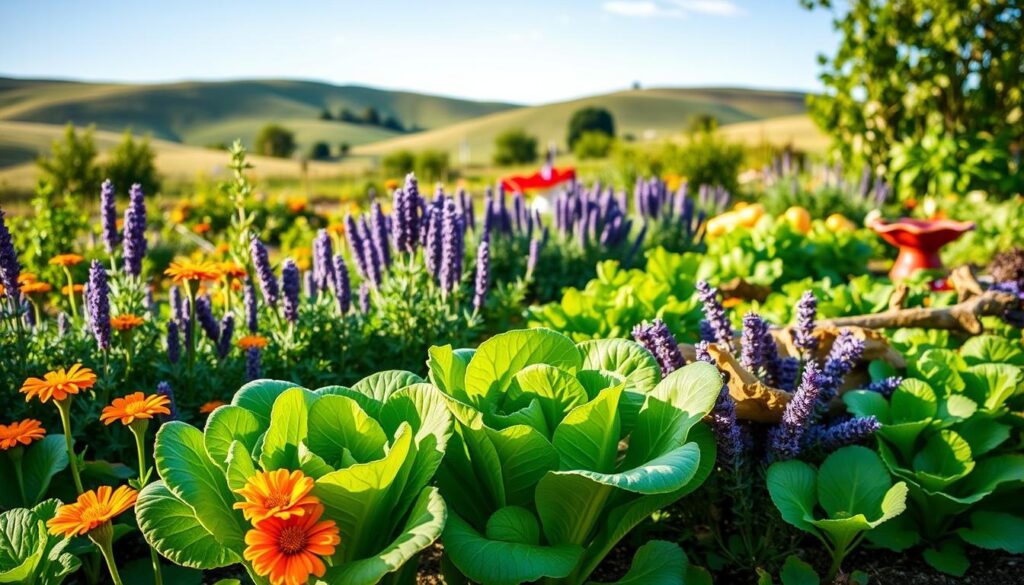
Maximizing Space with Companion Planting
Utilizing effective gardening strategies allows you to make the most of your space. Maximizing space with companion planting not only enhances productivity but also promotes a healthier garden environment. Through smart planting techniques, your vegetable garden can thrive by creating layers of different plants. This approach yields significant benefits, including improved pest control and better sunlight exposure.
Vertical Planting Ideas
One innovative way to enhance your garden’s efficiency involves vertical planting ideas. Using trellises, you can grow climbing plants like peas alongside bok choy. These vertical structures save ground space while allowing other plants to flourish beneath. This method not only opens up limited garden areas but also ensures each plant receives adequate sunlight and airflow.
Companion Plant Layout Tips
Incorporating various heights in your garden bed maximizes space in a visually appealing way. Here are some companion plant layout tips that can elevate your gardening experience:
- Plant taller plants, such as sunflowers or corn, on the northern side to prevent shading smaller plants.
- Arrange low-growing herbs like basil or cilantro around the edges to easily access and harvest.
- Use intercropping techniques, where fast-growing plants occupy spaces between slower-growing ones.
| Plant Type | Height | Optimal Placement | Companion Benefits |
|---|---|---|---|
| Sunflower | Tall | Northern side | Provides shade for smaller plants |
| Basil | Medium | Edges | Repels pests and attracts beneficial insects |
| Peas | Tall | Along trellises | Nitrogen fixer, enhances soil fertility |
| Bok Choy | Medium | Center | Thrives when shielded from harsh sun |
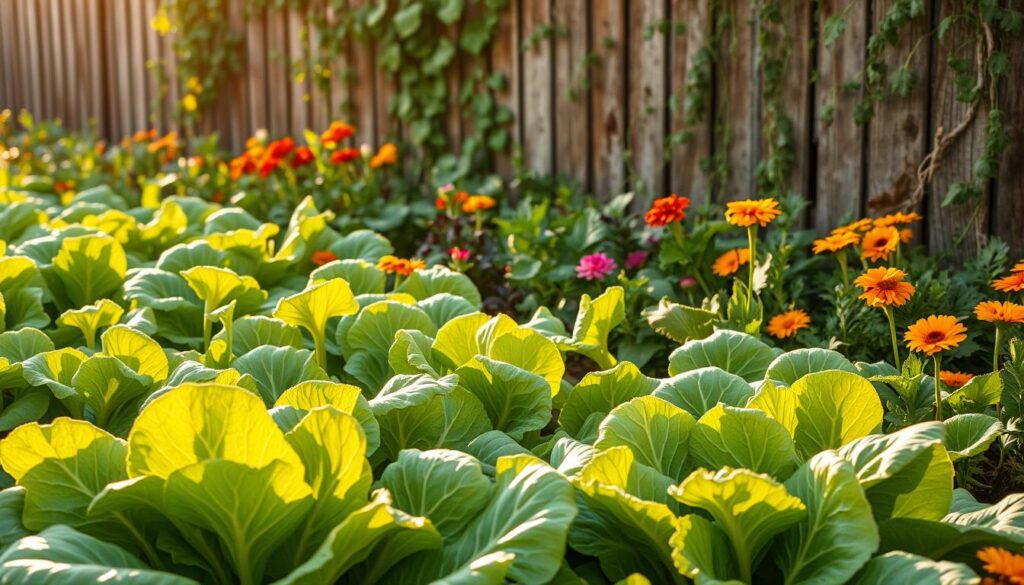
Common Pests and How Companion Plants Help
When growing bok choy, being aware of common pests for bok choy becomes essential for maintaining a healthy garden. Certain pests, such as aphids and cabbage worms, can significantly damage your crop. Utilizing companion plants is a practical and natural way to manage these issues.
Aphids and Bok Choy
Aphids can quickly become a menace to your bok choy. These tiny insects feed on plant sap, leading to stunted growth and weakened plants. For effective aphids prevention, incorporating companion plants like cilantro and dill can be quite beneficial. These plants attract natural predators such as ladybugs and lacewings, which help keep aphid populations under control.
Cabbage Worms Prevention
Cabbage worms are notorious for their destructive feeding habits on cruciferous plants like bok choy. For cabbage worms prevention, marigolds and certain herbs serve as effective companions. Marigolds naturally repel these pests while enhancing the overall health of your garden. Consider interplanting these flowers near your bok choy to create a more resilient environment.
Natural Predators Support
Encouraging natural predators is crucial in combating pests organically. By planting a diverse range of companion plants, you create habitats for beneficial insects that contribute to pest management. This approach not only aids in controlling common pests for bok choy but also fosters a balanced ecosystem in your garden.
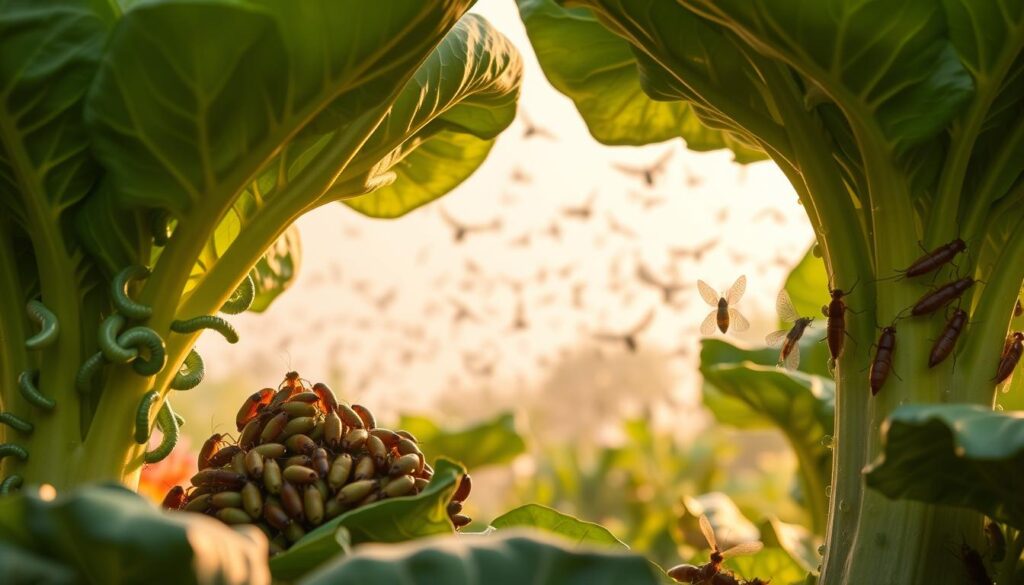
Fertility and Soil Health with Companions
In the quest for a thriving garden, understanding the relationship between fertility and soil health with companion plants is essential. When you integrate specific plants, you create a harmonious ecosystem that benefits each other as well as the soil. This section will explore nitrogen-fixing plants for bok choy, how enhancing soil structure with gardening plays a role, and the importance of organic matter contributions.
Nitrogen-fixing Plants
Nitrogen-fixing plants, such as beans and peas, work symbiotically with your bok choy. By planting these alongside bok choy, you improve soil fertility, which is crucial for the healthy growth of your crops. These plants convert atmospheric nitrogen into a form that is easily accessible to your vegetables, helping to boost their overall yield.
Enhancing Soil Structure
Enhancing soil structure with gardening techniques can greatly impact your bok choy’s growth. Incorporating plants that develop deep root systems, like carrots, encourages better water and nutrient retention. This leads to improved drainage and aeration, which are vital for root health, allowing your bok choy to flourish in a well-balanced environment.
Organic Matter Contributions
Adding organic matter, such as compost or pureed green manures, significantly enriches your planting bed’s health. These materials improve both fertility and soil health with companion plants, providing essential nutrients that encourage robust growth. Regularly amending your garden with organic matter fosters a thriving ecosystem, ensuring your bok choy and its companions have the best conditions to thrive.
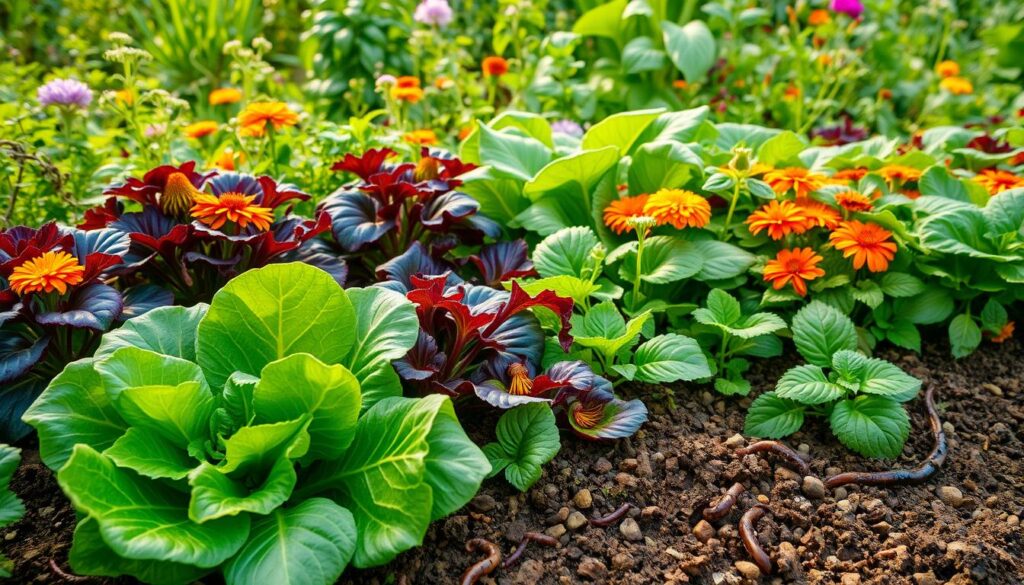
Crafting a Companion Planting Plan
Creating an effective companion planting plan can significantly enhance the growth and resilience of your bok choy. Start by establishing an ideal planting schedule for bok choy that takes into account the optimal timing for each companion plant. This allows you to maximize sunlight exposure, improve nutrient uptake, and promote healthy pollination.
Ideal Planting Schedule
Timing is crucial when planning your garden. Use the following guidelines to align your planting schedule:
| Plant | Optimal Planting Time | Companion Plant |
|---|---|---|
| Bok Choy | Early Spring | Peas |
| Bok Choy | Late Summer | Radishes |
| Bok Choy | Mid Spring | Basil |
Companion Planting Layouts
Design your garden layout to prevent overcrowding while ensuring that beneficial plants are positioned strategically. Group bok choy with companions that thrive under similar conditions. This approach not only maximizes the use of sunlight but also utilizes the natural strengths of each plant, such as pest deterrence and support for pollinators.
Resources for Companion Planting
Utilize a variety of companion planting resources to enhance your knowledge. Gardening books provide in-depth strategies, while online forums offer advice tailored to your local conditions. Embrace these tools to refine your crafting a companion planting plan and discover the best practices for your unique garden environment.
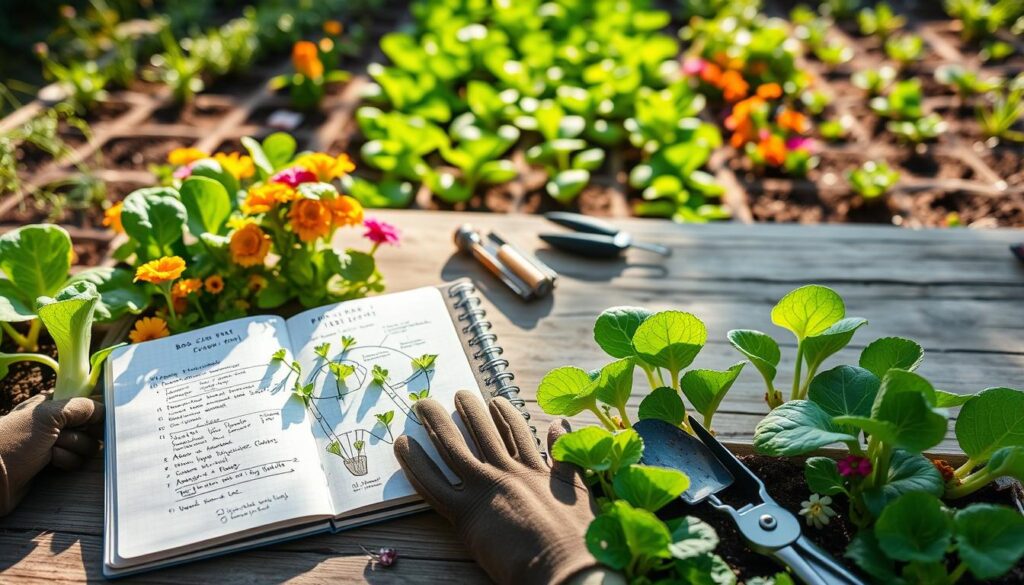
Harvesting and Care for Bok Choy
When it comes to harvesting bok choy, timing plays a crucial role in ensuring both flavor and longevity. Additionally, it is essential to keep in mind the care for companion plants in your garden, as their health directly influences bok choy’s success.
Best Practices for Harvesting
To achieve optimal flavor and texture, harvest bok choy in the cooler parts of the day. This helps minimize moisture loss, keeping your produce fresh. Cut the stems above the soil level, allowing the plant to regenerate for a potential second harvest. Pay attention to the size of the leaves—when they reach about six to eight inches long, it’s the perfect time to reap the rewards of your gardening efforts.
Caring for Companion Plants
While focusing on harvesting bok choy, don’t neglect the importance of caring for companion plants. Regular watering and vigilant pest management play key roles in maintaining a balanced ecosystem in your garden. Ensure that each plant receives adequate water, while also checking for any signs of pests or diseases. This proactive approach fosters a thriving environment that benefits all plants, including your bok choy.
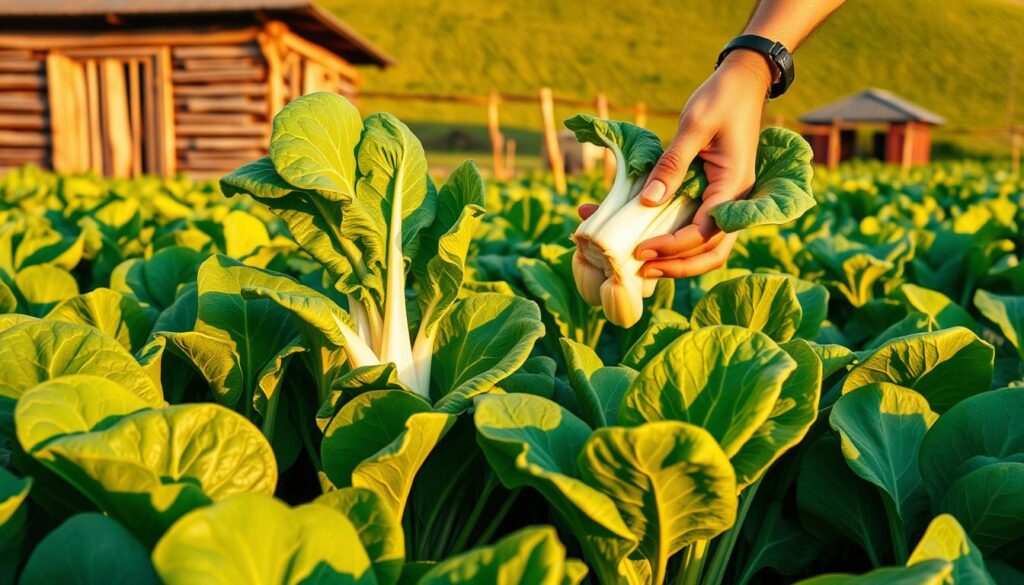
Enjoying Your Bok Choy Harvest
Once you’ve successfully harvested your bok choy, it’s time to savor its flavor in your kitchen. Bok choy offers a mild taste that pairs well with various dishes. Whether you prefer stir-fries, soups, or salads, you can explore numerous cooking tips for bok choy to make the most of your bounty.
Cooking Tips and Recipes
When preparing bok choy, consider these cooking tips for bok choy to enhance its natural flavors and retain its nutritional benefits:
- Steaming is a fantastic method that keeps bok choy tender and vibrant.
- Quick stir-frying with garlic and a splash of soy sauce adds a delicious depth.
- Adding it to soups helps create a hearty dish while boosting the overall nutrition.
Experiment with recipes with bok choy that incorporate different ingredients. Pair it with proteins like chicken or tofu for a complete meal, or toss it in a fresh salad with citrus dressing for a light option.
Storing Bok Choy for Freshness
To enjoy your bok choy for days after harvest, focus on proper storing bok choy for freshness. Here are effective methods:
- Keep bok choy in the refrigerator in a perforated bag to maintain moisture.
- Avoid washing before storage to extend its shelf life.
- For longer preservation, blanch and freeze bok choy, which maintains its flavor and nutrients.
With these strategies, you can ensure your bok choy provides delicious meals longer while maintaining its crispness and delectable taste.

Conclusion: Thriving Gardens with Bok Choy
Integrating companion planting into your gardening practices is not just a trend; it’s a proven approach to cultivating a flourishing garden with bok choy. As you embrace this method, you’re likely to notice significant improvements in soil health and crop yields. The long-term benefits of companion planting extend beyond just your immediate harvests. They foster a vibrant ecosystem, inviting essential wildlife and promoting biodiversity within your garden space.
The Long-term Benefits of Companion Planting
When you carefully select companion plants for bok choy, you’re ensuring a sustainable relationship between the crops and their environment. This partnership enhances soil fertility and structure, leading to resilient plants that can withstand pests and diseases more effectively. Over time, these improvements can yield rich, nutritious produce and a thriving garden that nourishes both you and the local ecosystem.
Your Path to a Flourishing Garden
As you continue your journey with companion planting, remember that each step contributes to a more abundant harvest. The knowledge and experience you gain now will forge a path towards a flourishing garden with bok choy that serves both aesthetic and practical purposes. By prioritizing these sustainable practices, you’re building a garden that will reward you for years to come, proving that the conclusion on companion planting is just the beginning of your gardening adventure.
